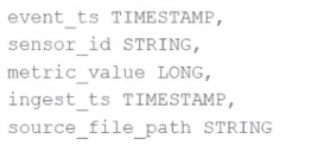Databricks Databricks-Certified-Associate-Developer-for-Apache-Spark-3.5 - Databricks Certified Associate Developer for Apache Spark 3.5 – Python
Total 136 questions
36 of 55.
What is the main advantage of partitioning the data when persisting tables?
What is a feature of Spark Connect?
8 of 55.
A data scientist at a large e-commerce company needs to process and analyze 2 TB of daily customer transaction data. The company wants to implement real-time fraud detection and personalized product recommendations.
Currently, the company uses a traditional relational database system, which struggles with the increasing data volume and velocity.
Which feature of Apache Spark effectively addresses this challenge?
A data engineer replaces the exact percentile() function with approx_percentile() to improve performance, but the results are drifting too far from expected values.
Which change should be made to solve the issue?

A developer notices that all the post-shuffle partitions in a dataset are smaller than the value set for spark.sql.adaptive.maxShuffledHashJoinLocalMapThreshold.
Which type of join will Adaptive Query Execution (AQE) choose in this case?
A data engineer wants to write a Spark job that creates a new managed table. If the table already exists, the job should fail and not modify anything.
Which save mode and method should be used?
16 of 55.
A data engineer is reviewing a Spark application that applies several transformations to a DataFrame but notices that the job does not start executing immediately.
Which two characteristics of Apache Spark's execution model explain this behavior? (Choose 2 answers)
Given a CSV file with the content:

And the following code:
from pyspark.sql.types import *
schema = StructType([
StructField("name", StringType()),
StructField("age", IntegerType())
])
spark.read.schema(schema).csv(path).collect()
What is the resulting output?
Given the schema:

event_ts TIMESTAMP,
sensor_id STRING,
metric_value LONG,
ingest_ts TIMESTAMP,
source_file_path STRING
The goal is to deduplicate based on: event_ts, sensor_id, and metric_value.
Options:
A data engineer has been asked to produce a Parquet table which is overwritten every day with the latest data. The downstream consumer of this Parquet table has a hard requirement that the data in this table is produced with all records sorted by the market_time field.
Which line of Spark code will produce a Parquet table that meets these requirements?



